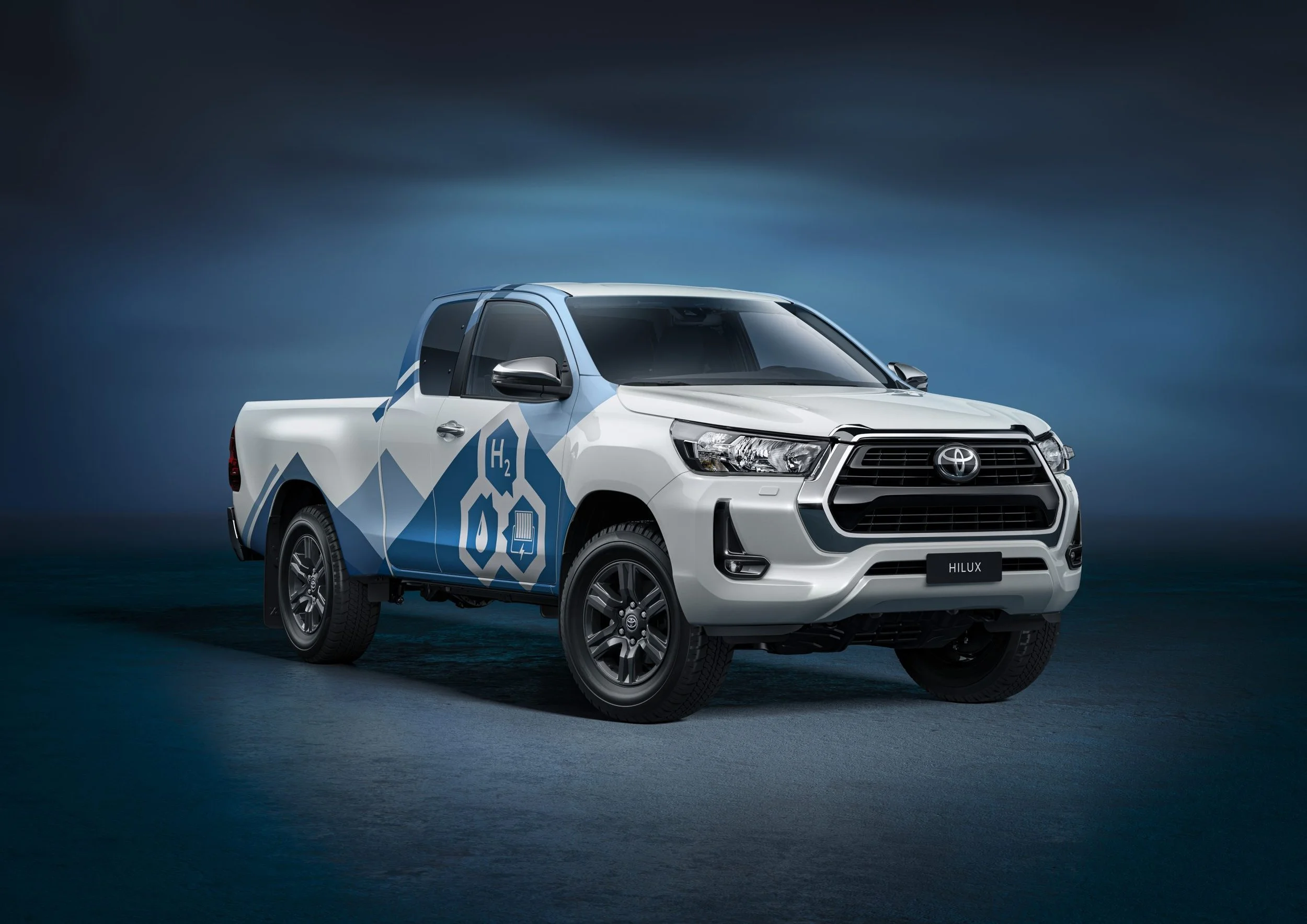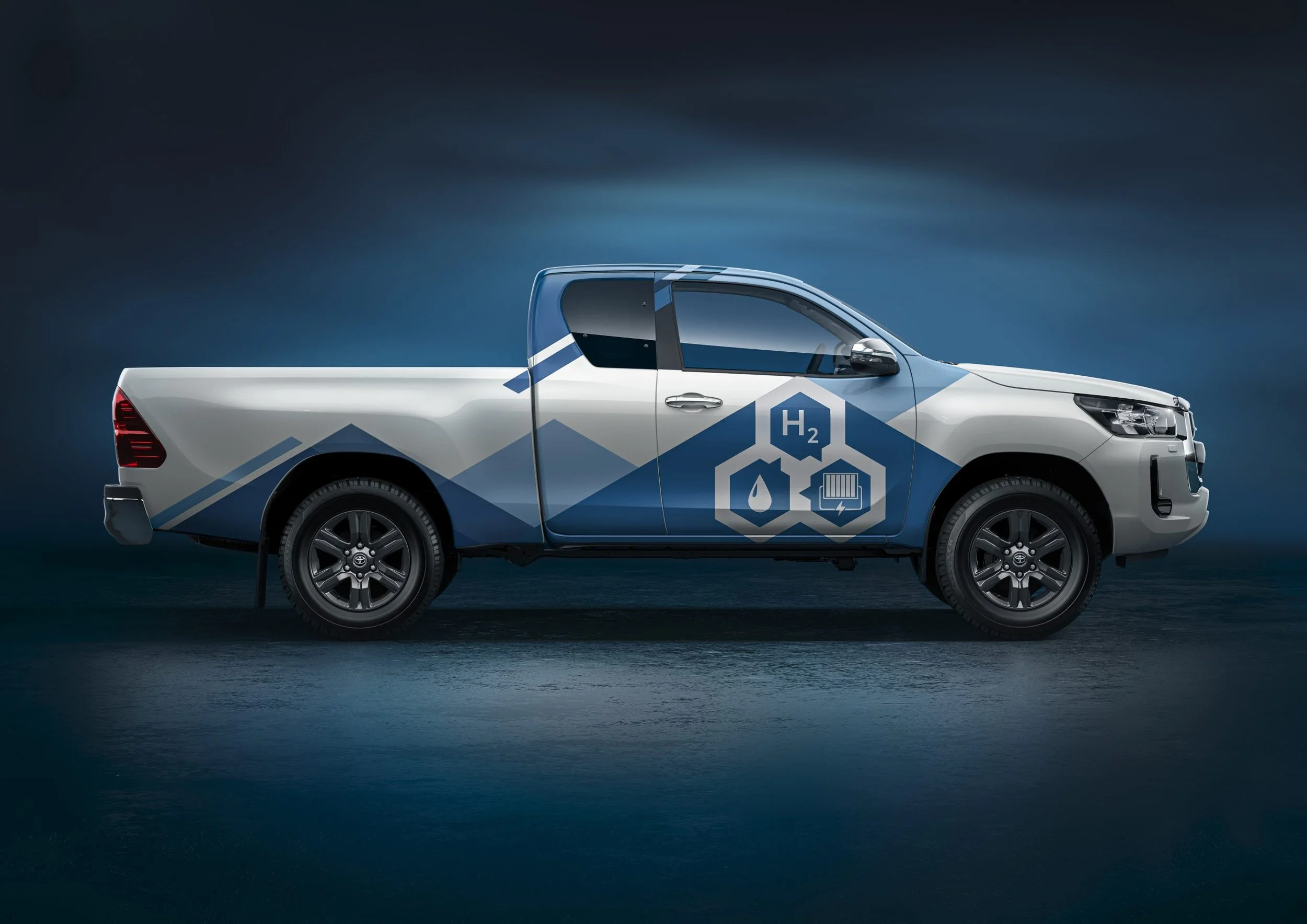Hydrogen fuel cell Hilux in development
/Toyota-backed project bases in the United Kingdom with British government funding.
EVERYONE here is talking electric utes, but how about a hydrogen fuel cell Hilux?
A Toyota-led consortium in the United Kingdom is developing a prototype hydrogen-powered version of the one-tonner.
Though it appears to focus on the rear-drive rather than the four-wheel-drive version Kiwis predominantly choose, the project partly funded by Britain’s government will likely be of interest to Toyota New Zealand, which has also been trialling hydrogen’s potentials with a car linked to the Hilux programme.
On top of this, TNZ has also committed to meeting Government’s CO2 reductions plan for new vehicles, which calls for a reduction in high emissions product. Hilux in its diesel formats falls into that category and TNZ boss Neeraj Lala only last week told a national newspaper that his Palmerston North-based operation is now active in reducing the model’s volume, by successfully persuading past supporters to look at lower CO2 alternates, the RAV4 hybrid in particular.
Specifically, the drive components used in the Hilux are similar to those found in the second-generation Mirai, Toyota’s hydrogen fuel cell car that has been undergoing driving in Auckland with selected partners for most of this year.
The Mirari powertrain consists of a polymer electrolyte fuel cell which is mated to a lithium ion battery, but it’s formatted for two-wheel-drive.
The second-generation Mirai has three carbon-fibre reinforced-plastic hydrogen storage tanks carrying up to 141 litres or 5.6kg of hydrogen pressured to 700 bar.
This feeds into a 330-cell solid polymer electrolyte fuel-cell stack, which generates electricity by combining the stored hydrogen with atmospheric oxygen.
A hybrid-sized 1.2kW lithium-ion battery stores excess energy made by the fuel cell, as well as energy recovered from regenerative braking.
An electric motor making 134kW and 300Nm drives the rear wheels.
Toyota claims the Mirai has a range of over 640 kilometres but it’s thought the less aerodynamic Hilux is unlikely to offer quite such an impressive figure. The images of the hydrogen Hilux show no differences to the internal-combustion engined model.
Toyota says the development of a successful hydrogen transport sector is an essential element in achieving the firm’s goal of multi-technological carbon-neutrality.
Richard Kenworthy, Toyota Motor UK managing director, said: “We see this project as a great opportunity to contribute to the critical path on the road to carbon zero mobility.
“This UK Government funding will enable teams within the consortium to acquire key skills that can then be used to investigate other fuel cell applications.”
While battery-electric cars are seeing rapidly growing sales and are widely seen as the future of emissions free motoring, hydrogen cars are still somewhat overlooked. Do they really have a future?
It’s often forgotten that hydrogen is the most abundant resource in the universe to power cars.
At the time of writing, there are only two mainstream hydrogen-powered cars on NZ roads, the Mirai and the Hyundai Nexo, and neither are available through the retail chain, though Hyundai NZ did sell a Nexo to a private buyer in Christchurch.
More hydrogen-powered cars and vans are in development. Land Rover, BMW and Opel have projects under way. BMW has just started a hydrogen programme with its iX electric car.
Because refilling a hydrogen car is very similar to filling up with petrol or diesel, it is also almost as quick - it takes around five minutes to fill a tank. This is undoubtedly an advantage over the long waiting times when charging an electric car.
The biggest challenges to hydrogen is the cost of creating the fuel and developing an infrastructure. The car trials in NZ rely on hydrogen networks that were not designed for cars and though some traditional fuel retailers are now provisioning electric rechargers, so far none have considered replenishment of hydrogen cars. This occurs in the UK, but barely, with just 11 hydrogen stations.
One of the arguments that’s sometimes made against hydrogen vehicles is that they’re less efficient than EVs. Because hydrogen doesn’t occur naturally, it has to be extracted, then compressed in fuel tanks. It then has to mix with oxygen in a fuel cell stack to create electricity to power the car’s motors.
Cynics point to the efficiency loss in this process when compared with an electric car in which the electricity comes straight from a battery pack charged from the mains.
That’s true to an extent, but hydrogen-powered cars are not really expected to replace EVs. Instead, hydrogen is intended to complement pure electric power, and there’s a good reason for this: it is the cleanest fuel possible.
Let’s not forget, also, that lithium-ion battery production for electric cars is very energy-intensive, with lithium mining emitting several tonnes of CO2. If this is taken into account along with charging the battery from anything other than a zero-emission source throughout its lifetime, an electric car still contributes towards a certain amount of CO2 emission - even if this does not originate from an exhaust.
News of the Hilux project comes as local media have been quibbling about when the major providers of utilities here might provide their vehicles with electric assist.
The Ford Ranger and the next generation of Mitsubishi Triton are front-runners for plug-in hybrid drivetrains; their respective makers have confirmed these models are designed for that technology. Ford outlined to MotoringNZ some months ago that the Ranger is designed to take batteries, though not enough to make it set to become a fully-electric product.
Speaking at the national launch event for T6.2 Ranger, in July, Ford’s T6 chief platform engineer Ian Foston, based in Melbourne, said the product lifecycle for Ranger means that some form of electrification is a given and the brand would be relating more about this soon.
“We’ve already said we are electrifying, we just haven’t yet been specific about what or when. We’re working on it at the moment and it sometime I can no doubt chat to you about in the months to come.”
“It’s safe to say that the platform is very modular and flexible … being a body on frame vehicle there is plenty of space for us to consider many locations for various bits and pieces.”
Foston has previously said the vehicle has “a bandwidth of electrification hardware” that enables Ford to go anywhere from a 24-volt mild hybrid all the way through to a fully-electric version.
VW has also indicated the same process for its Ranger-spun Amarok and confirmed the body-on-frame chassis can accept an electric drivetrain and battery pack.
The next-generation Triton seems likely to come out in 2023. This model will be shared with the next Nissan Navara, as both brands have subsumed in the Alliance also involving Renault. The tie-up with the utes is to save development costs, in the same way that Ford has buddied with Volkswagen and Mazda with Isuzu.
Mitsubishi is taking lead role in Triton’s development. The PHEV is not expected to be available when it launches, but will come on stream at some point after that. Various reports suggest it could be late 2024, or even 2025. Mitsubishi Motors New Zealand has said it has no expectation of seeing a PHEV Triton in 2023.



















